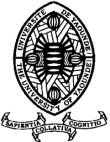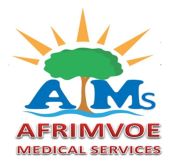Venous Thromboembolic Disease in HIV-Infected Patients in Morocco: Prevalence, Clinical Presentation and Outcome
La Maladie Thromboembolique Veineuse chez les Patients Infectés par le VIH au Maroc : Prévalence, Présentation Clinique et Évolution
Keywords:
Thromboembolic diseases, HIV, CasablancaAbstract
RESUME
Introduction. La Maladie Thromboembolique Veineuse (MTEV) est plus fréquente au cours de l’infection par le virus de l’immunodéficience humaine (VIH) que dans la population générale. L’Objectif de notre étude était d’étudier prévalence des maladies thromboemboliques veineuses et de décrire les aspects sociodémographiques, cliniques, paracliniques, thérapeutiques et évolutifs de celle-ci chez les patients infectés par le VIH suivis dans le service des maladies infectieuses du CHU Ibn Rochd de Casablanca. Méthodologie. Il s’agissait d’une étude rétrospective et descriptive menée de 1er janvier 1999 au 31 décembre 2015 portant sur les patients infectés par le VIH et hospitalisés pour maladies thromboemboliques veineuses dans le service des maladies infectieuses CHU Ibn Rochd de Casablanca. Résultats. Nous avons enregistré 49 patients séropositifs ayant une maladie thromboembolique veineuse, soit une prévalence de 1,3 %. L’âge moyen était de 43 ±9,7 ans avec un sex ratio de 1,7. Il s’agissait essentiellement de thromboses veineuses profondes (87,7%), de thromboses artérielles (10,2%) et d’embolies pulmonaires (4,08%). La moyenne de CD4 était de 215 cellules/mm3. Une infection opportuniste était retrouvée chez (69,38%). Les signes cliniques les plus retrouvés étaient une grosse jambe inflammatoire (95 %) et un signe de Homans positif (26 %). Tous les patients avaient bénéficié d’une anticoagulation par héparinothérapie. D’autres traitements ont été associé chez 69 % des patients en fonction des pathologies associées à la METV. L’évolution a été favorable chez 43 % des patients. Conclusion. L’infection à VIH est à l’origine d’un état d’hypercoagulabilité. La MTEV est élevée chez les patients infectés par le VIH, greffée d’une lourde mortalité surtout en présence d’une immunodépression sévère et des infections opportunistes.
ABSTRACT
Introduction. Venous Thromboembolic Disease (VTE) is more common during HIV infection than in the general population. The objective of our study was to investigate the prevalence of venous thromboembolic diseases and to describe the sociodemographic, clinical, paraclinical, therapeutic, and evolutionary aspects of this condition in HIV-infected patients followed in the infectious diseases department of the Ibn Rochd University Hospital in Casablanca. Methodology. This was a retrospective descriptive study conducted from January 1, 1999 to December 31, 2015, focusing on HIV-infected patients hospitalized for venous thromboembolic diseases in the infectious diseases department of Ibn Rochd University Hospital in Casablanca. Results. We recorded 49 HIV-positive patients with venous thromboembolic disease, representing a prevalence of 1.3%. The mean age was 43 ± 9.7 years with a sex ratio of 1.7. The average CD4 count was 215 cells/mm3. Opportunistic infections were found in 69.38% of patients. The most common clinical signs were a swollen leg (95%) and a positive Homans sign (26%). All patients received anticoagulation therapy with heparin. Additional treatments were given to 69% of patients based on the associated conditions with VTE. The outcome was favorable in 43% of patients. Conclusion. HIV infection leads to a state of hypercoagulability. VTE is high in HIV-infected patients, with a high mortality rate especially in the presence of severe immunosuppression and opportunistic infections.
References
Dictionnaire illustré des termes de médecine Garnier-Delamare. 30 éme ed. Paris: Maloine; 2011. p. 859.
Martineau J. thromboprophylaxie et gestion perioparatoire des anticoagulants. Quebec pharmacie. 2007;54(6):8.
Loire R, Capron L. Complications vasculaires de l’infection par le VIH. STV 1995;7:487-92.
Majluf-Cruz A, Silva-Estrada M, Sanchez-Barboza R, Montiel-Manzano G, Trevino-Perez S, Santoscoy-Gomez M et al. Venous thrombosis among patients with AIDS. Clin Appl Thromb Hemost 2004;10:19-25.
Dembélé JP, Diakité M, Tsayem Melago AJ, Konaté I, Cissoko Y, Fofana A et al. Thrombose Veineuse des Membres Inférieurs chez les Personnes Vivant avec le VIH : Étude de 33 Cas au CHU du Point G. Health Sci. Dis 2021;22:7-10.
Sosthene Tsongo Vululi, Samuel Bugeza, Muyinda Zeridah, Henry Ddungu, Akello Betty Openy, Mubiru Frank and Rosalind Parkes‑Ratanshi. Prevalence of lower limb deep venous thrombosis among adult HIV positive patients attending an outpatient clinic at Mulago Hospital. AIDS Res Ther (2018) 15:3.
FN Ello, LD Bawe, GA Kouakou, CM Mossou, D. Adama, A. N'douba Kassi1et al. Manifestations thromboemboliques chez 36 patients Ouest Africains infectés par le VIH. Pan African Medical Journal. 2018;31:224.
K. Diallo Mbaye, N. Lakhe, L. Fortes, V. Cissé Diallo, D. Ka, A. Massaly et al. Aspects épidémiologiques, cliniques, paracliniques, thérapeutiques et évolutifs de la maladie thromboembolique veineuse au cours de l’infection à VIH. 21es Journées nationales d’infectiologie / Médecine et maladies infectieuses 50 (2020) S31–S199.
Z. Tazi-Mezalek, H. Alaoui-Bennasser, M. Maamar, H. Harmouche, M. Adnaoui. Thrombose et infection à VIH: à propos de 10 cas. Journal des Maladies Vasculaires. Volume 39, Issue 5, October 2014, Pages 351-352.
Zabsonre P, Nebie LVA, Niakara A, Samandoulougou A, Toguyeni JY, Kabore JP. Maladie veineuse thromboembolique à Ouagadougou: place de l’infection à VIH. Ann Dermatol Venereol 2007; 134:1S30-1S62.
Sangar I, Menta I, Ba HO, Fofana C A, Sidibé N, Sogodogo A, Sanogo KM. Service de Cardiologie, CHU Gabriel Touré Bamako. Thrombophlebite des membres dans le service de cardiologie du CHU Gabriel Touré. MALI MEDICAL 2015 TOME XXX N°1.
Jacobson MC, Dezube BJ, Aboulafia DM. Thrombotic complications in patients infected with HIV in the era of highly active antiretroviral therapy: a case series. Clin Infect Dis. 2004;39(8):1214-122.
Casella IB, Bosch MA, Sabbag CRD. Incidence and risk factors for bilateral deep venous thrombosis of the lower limbs. Angiology. 2009;60(1):99-10.
Julius Chacha Mwita, Kgomotso Baliki, Ludo Tema. Cerebral venous sinus thrombosis in HIV-infected patients: report of 2 cases. Pan African Medical Journal. 2013; 16:4.
Downloads
Published
How to Cite
Issue
Section
License
Copyright (c) 2024 I. Dollo, G. Dabo, A. Coulibaly, M. Es-Sebani, R. Bensghir, M. El Fane, M. Sodqi, L. Marih, A. Ouladlahsen, H. Lamdini, A. Cahkib, K. Marhoum El filali

This work is licensed under a Creative Commons Attribution-NoDerivatives 4.0 International License.
Authors who publish with this journal agree to the following terms:
- Authors retain copyright and grant the journal right of first publication with the work simultaneously licensed under a Creative Commons Attribution License CC BY-NC-ND 4.0 that allows others to share the work with an acknowledgement of the work's authorship and initial publication in this journal.
- Authors are able to enter into separate, additional contractual arrangements for the non-exclusive distribution of the journal's published version of the work (e.g., post it to an institutional repository or publish it in a book), with an acknowledgement of its initial publication in this journal.
- Authors are permitted and encouraged to post their work online (e.g., in institutional repositories or on their website) prior to and during the submission process, as it can lead to productive exchanges, as well as earlier and greater citation of published work










